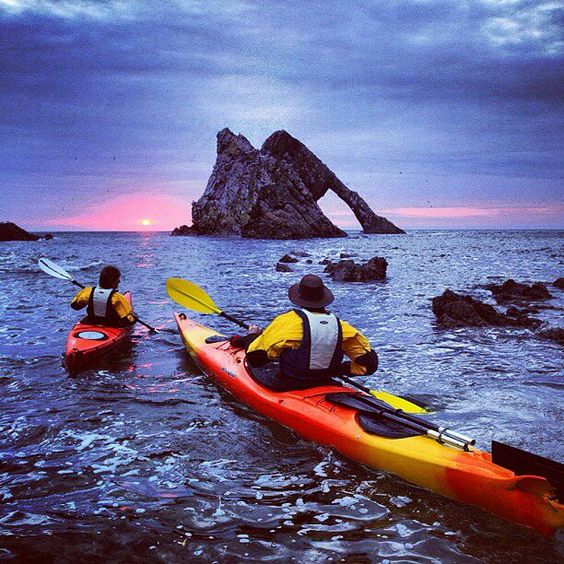- English
- Español
- Português
- русский
- Français
- 日本語
- Deutsch
- tiếng Việt
- Italiano
- Nederlands
- ภาษาไทย
- Polski
- 한국어
- Svenska
- magyar
- Malay
- বাংলা ভাষার
- Dansk
- Suomi
- हिन्दी
- Pilipino
- Türkçe
- Gaeilge
- العربية
- Indonesia
- Norsk
- تمل
- český
- ελληνικά
- український
- Javanese
- فارسی
- தமிழ்
- తెలుగు
- नेपाली
- Burmese
- български
- ລາວ
- Latine
- Қазақша
- Euskal
- Azərbaycan
- Slovenský jazyk
- Македонски
- Lietuvos
- Eesti Keel
- Română
- Slovenski
- मराठी
- Srpski језик
Teach you to learn kayaking
2023-02-27
Learning to kayak is fun and easy. We start with the basics, covering: basic movement coordination and reset self-rescue techniques. Hope you all have a great time.
Basic actions
1. Paddle-holding posture
Generally speaking, the right hand holding the paddle is called the control end, and the left hand holding the paddle is called the auxiliary end. When the hands are stretched forward, the right-hand paddle should be perpendicular to the ground at 90 degrees. When the paddle is placed directly above the head, the elbows should be bent to less than 90 degrees, which is the correct grip.
2. Get on and off the boat
Place the paddle against the back of the hatch, the paddle at the ground end is parallel to the ground and the force-applying surface faces upward, and the hatch is separated from the blade. Hold the hatch and the paddle shaft with one hand, and put the four fingers on the inner edge of the hatch of the kayak, and the thumbs are close to the paddle shaft. The other hand is holding the oar shaft next to the cockpit opening, and the same thumbs are close to the oar shaft, first put one foot into the cockpit buttocks and sit behind the cockpit opening, then extend the other foot into the cockpit and slide in on the cabin seat. 3. Sitting posture
When rowing a boat, it can be divided into three sitting postures. The body is forward, the body is neutral and the body is backward.
It is recommended that when kayaking, the body should be forward, and the body should be neutral and not backward. If the body is backward, it will make you lose control.
1. Straight swipe
Tilt the right body forward about 30--45 degrees and extend the right oar to the right front, insert the oar blade into the water near the toes, and pull back along the hull until it is pulled out of the water about behind the hip. While the oar is pulled out of the water, tilt the left body forward about 30--45 degrees, extend the left oar to the left front, insert the oar blade into the water around the toes, and pull back along the hull until it is pulled behind the hip get out of the water. Repeat bilateral strokes. When paddling, the oars should be as close to the canoe as possible.
2. Backstroke
Insert the right oar into the water at about the hip, and push back along the hull until it is pulled out of the water at about the knee. While pulling the right oar out of the water, insert the left oar into the water at about the hip, push the hull forward, and pull it out of the water around the knees. Repeat this double stroke. When paddling, the oars should be as close to the hull as possible.
3. Forward sweep
Left: Turn your body to the left as far as possible, and look at the target you want to turn (try to look at the tail of the kayak on your left during practice). Pull the hull back out of the water approximately behind the hips.
Right side: turn the body to the right as far as possible, and look at the target to be turned (try to look at the stern on your right in practice), extend the left oar to the right front, insert the oar into the water around the toes, and go along the hull Pull back out of the water approximately behind the hips.
Common mistakes:
The eyesight follows the line of the paddle, and the paddle goes there and the line of sight follows that. (If you are playing basketball, you should know that when you dribble, your eyes are looking at the direction you want to move forward, not staring at the ball)
4. Back sweep
Left: Turn your body to the left as far as possible, and look at the target you want to turn (try to keep looking at the stern on your left during the practice). Extend the right paddle to the left rear, and insert the paddle into the water near the stern, along the hull Pull back until you're about out of the water near your knees.
Right side: Turn your body to the right as much as possible, and look at the target you want to turn (try to keep looking at the stern on your right during the practice). Extend the left oar to the front right, and insert the oar into the water near the stern, along the hull Pull back out of the water approximately behind your knees.
Common mistakes:
Basic actions
1. Paddle-holding posture
Generally speaking, the right hand holding the paddle is called the control end, and the left hand holding the paddle is called the auxiliary end. When the hands are stretched forward, the right-hand paddle should be perpendicular to the ground at 90 degrees. When the paddle is placed directly above the head, the elbows should be bent to less than 90 degrees, which is the correct grip.
2. Get on and off the boat
Place the paddle against the back of the hatch, the paddle at the ground end is parallel to the ground and the force-applying surface faces upward, and the hatch is separated from the blade. Hold the hatch and the paddle shaft with one hand, and put the four fingers on the inner edge of the hatch of the kayak, and the thumbs are close to the paddle shaft. The other hand is holding the oar shaft next to the cockpit opening, and the same thumbs are close to the oar shaft, first put one foot into the cockpit buttocks and sit behind the cockpit opening, then extend the other foot into the cockpit and slide in on the cabin seat. 3. Sitting posture
When rowing a boat, it can be divided into three sitting postures. The body is forward, the body is neutral and the body is backward.
It is recommended that when kayaking, the body should be forward, and the body should be neutral and not backward. If the body is backward, it will make you lose control.

1. Straight swipe
Tilt the right body forward about 30--45 degrees and extend the right oar to the right front, insert the oar blade into the water near the toes, and pull back along the hull until it is pulled out of the water about behind the hip. While the oar is pulled out of the water, tilt the left body forward about 30--45 degrees, extend the left oar to the left front, insert the oar blade into the water around the toes, and pull back along the hull until it is pulled behind the hip get out of the water. Repeat bilateral strokes. When paddling, the oars should be as close to the canoe as possible.
2. Backstroke
Insert the right oar into the water at about the hip, and push back along the hull until it is pulled out of the water at about the knee. While pulling the right oar out of the water, insert the left oar into the water at about the hip, push the hull forward, and pull it out of the water around the knees. Repeat this double stroke. When paddling, the oars should be as close to the hull as possible.
3. Forward sweep
Left: Turn your body to the left as far as possible, and look at the target you want to turn (try to look at the tail of the kayak on your left during practice). Pull the hull back out of the water approximately behind the hips.
Right side: turn the body to the right as far as possible, and look at the target to be turned (try to look at the stern on your right in practice), extend the left oar to the right front, insert the oar into the water around the toes, and go along the hull Pull back out of the water approximately behind the hips.
Common mistakes:
The eyesight follows the line of the paddle, and the paddle goes there and the line of sight follows that. (If you are playing basketball, you should know that when you dribble, your eyes are looking at the direction you want to move forward, not staring at the ball)
4. Back sweep
Left: Turn your body to the left as far as possible, and look at the target you want to turn (try to keep looking at the stern on your left during the practice). Extend the right paddle to the left rear, and insert the paddle into the water near the stern, along the hull Pull back until you're about out of the water near your knees.
Right side: Turn your body to the right as much as possible, and look at the target you want to turn (try to keep looking at the stern on your right during the practice). Extend the left oar to the front right, and insert the oar into the water near the stern, along the hull Pull back out of the water approximately behind your knees.
Common mistakes:
The eyes follow the line of the paddle, and the paddle goes there and the line of sight follows there. (If you are playing basketball, you should know that when you dribble, your eyes are looking at the direction you want to move forward, not the ball.
Previous:What is fancy kayaking?



